Scale Creation with Creative Automation
Automate the ad production process with templatized creation, feed-based scale, and multi-point integration.
Book a Demo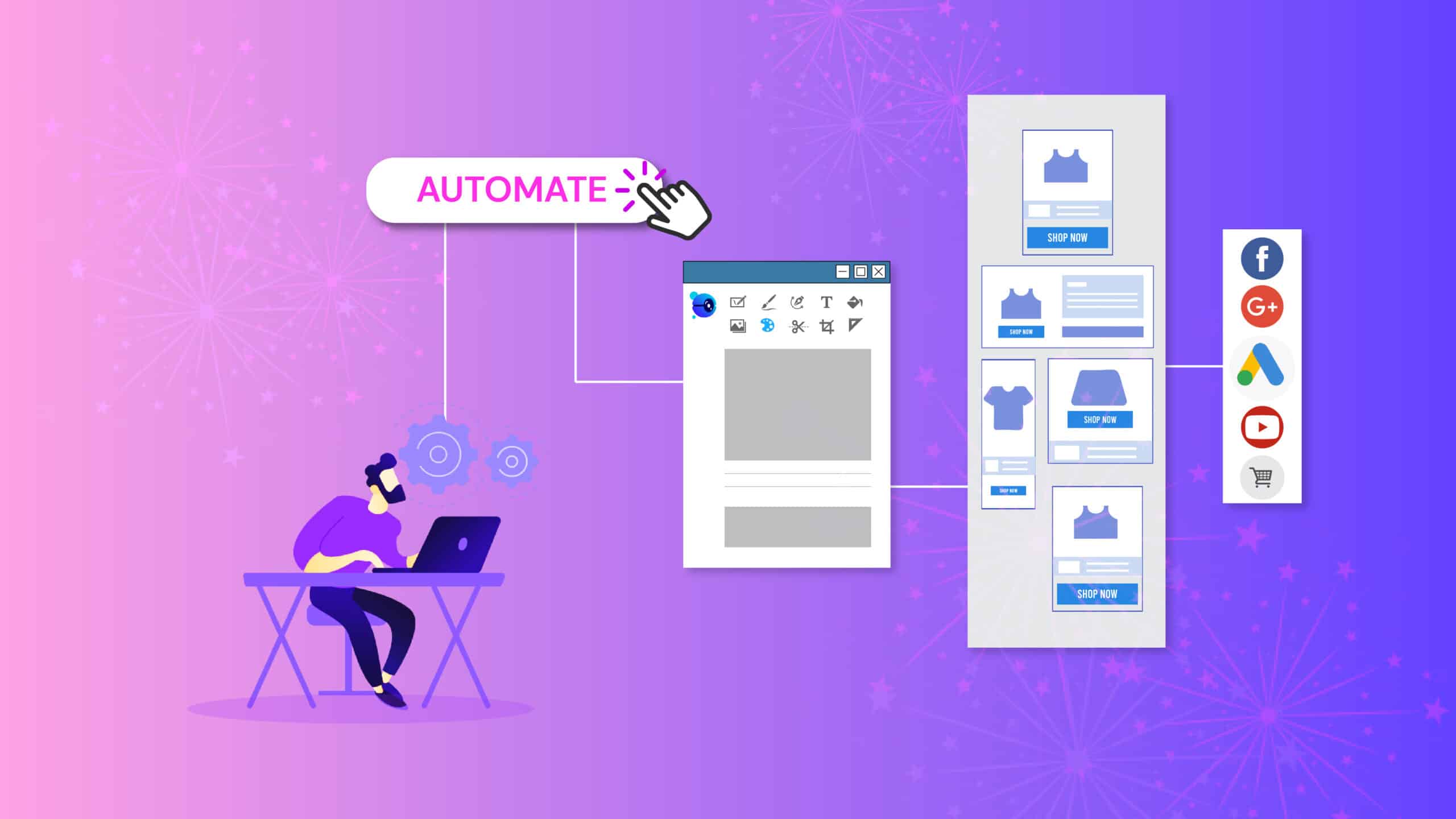
Automate the ad production process with templatized creation, feed-based scale, and multi-point integration.
Book a Demo
Great marketing campaigns need great visuals. Visuals have stopping power and convey brand messaging, and creativity is key to an ad’s success.
But creative marketing takes a back seat when your company caters to dozens of markets with multiple offerings. As a result, brand and design teams are mired in repetitive tasks because their creative development needs have grown exponentially.
The number of campaigns running each month is huge, and it’s not feasible for designers to cater to quick TATs.
It’s why companies like Cult.fit or Urban Company embrace automating ad creation so that they can focus on creative marketing.
In 2020, the digital world was swimming in 44 zettabytes of data. That’s 44 trillion GBs! By 2025, we’ll be producing 460 exabytes of data every day. That’s an overwhelming amount of digital noise for a brand to cut through. So the only way to stay on top of the consumer’s mind is to aim for originality.
And that’s where creative marketing comes in. It uses creativity to communicate brand messaging by hooking into the audience’s emotions. Great creative marketing ideas leave an inspiring customer experience, which leads to higher recognition, recall, and sales.

Creative marketing has become imperative in today’s digital landscape. Yet, teams are not able to focus on it because:
While these fundamental tasks are essential and rightfully demand time, there isn’t any left to channel towards creative marketing. This is where automating ad creation walks in.
Manually creating banner ads or videos is a slow process. Often, designers are stuck on a single campaign for weeks because they have to make each ad one at a time.
Ultimately, bottlenecks happen, and you can’t keep pace with the sheer volume of campaigns today’s digital landscape demands.
Automation takes away the pain of creating dozens of just slightly different banners through bulk creation and bulk editing features. Instead, designers produce one master visual template for a campaign, and creative automation does the rest by replicating it for all formats, in the right size with the correct copy, CTA, and images with respect to the personalized data you plug into the platform.
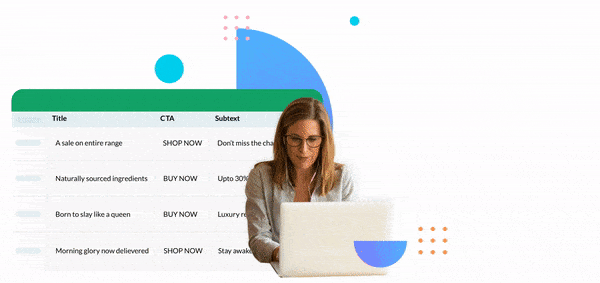
The average creative can take up to 5 weeks from concept to go-live day. But with automation, display banner ads and video production time are reduced to hours, leaving teams enough time to brainstorm on the following marketing trend.
For designers, complying with brand elements is an extra step that eats away their time. So often, in the battle to finish before the campaign deadline, compliance goes for a toss.
A mistake that has far-reaching consequences in the current digital landscape, where maintaining brand consistency across all touchpoints is the pillar to success. So much so that a consistent brand can increase revenue by 10 to 20%!
Automating parts of ad creation takes care of brand governance. For example, brands can create a design system with brand font, color, styles, and template preset. The system gives both designers and managers the peace of mind that every asset created is always brand compliant.
Role-based access control lets you decide who can or can’t edit creatives. For example, copywriters can tweak copy without disrupting the design.
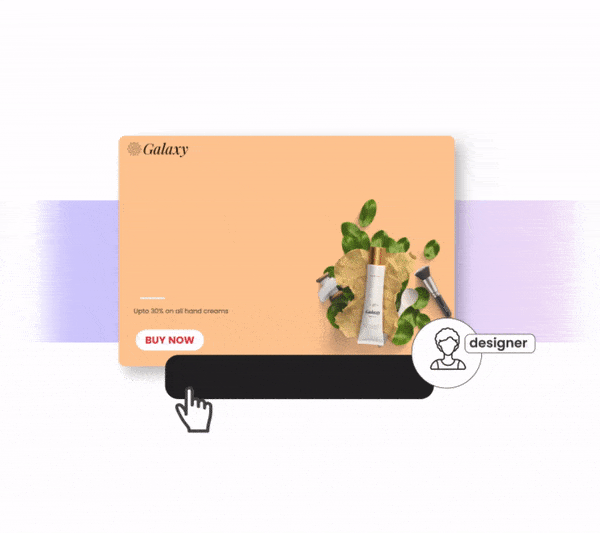
Besides roles, teams can set rules such as brand color palettes, copy lengths, logo placements, capitalization, and more.
This slashes down the scope of errors to a bare minimum, guaranteeing almost 100% uniformity. There’s an added benefit of automated creative intelligence. With set rules, you get a creative evaluation point that gives you a score on how well the creative complies with the rules.
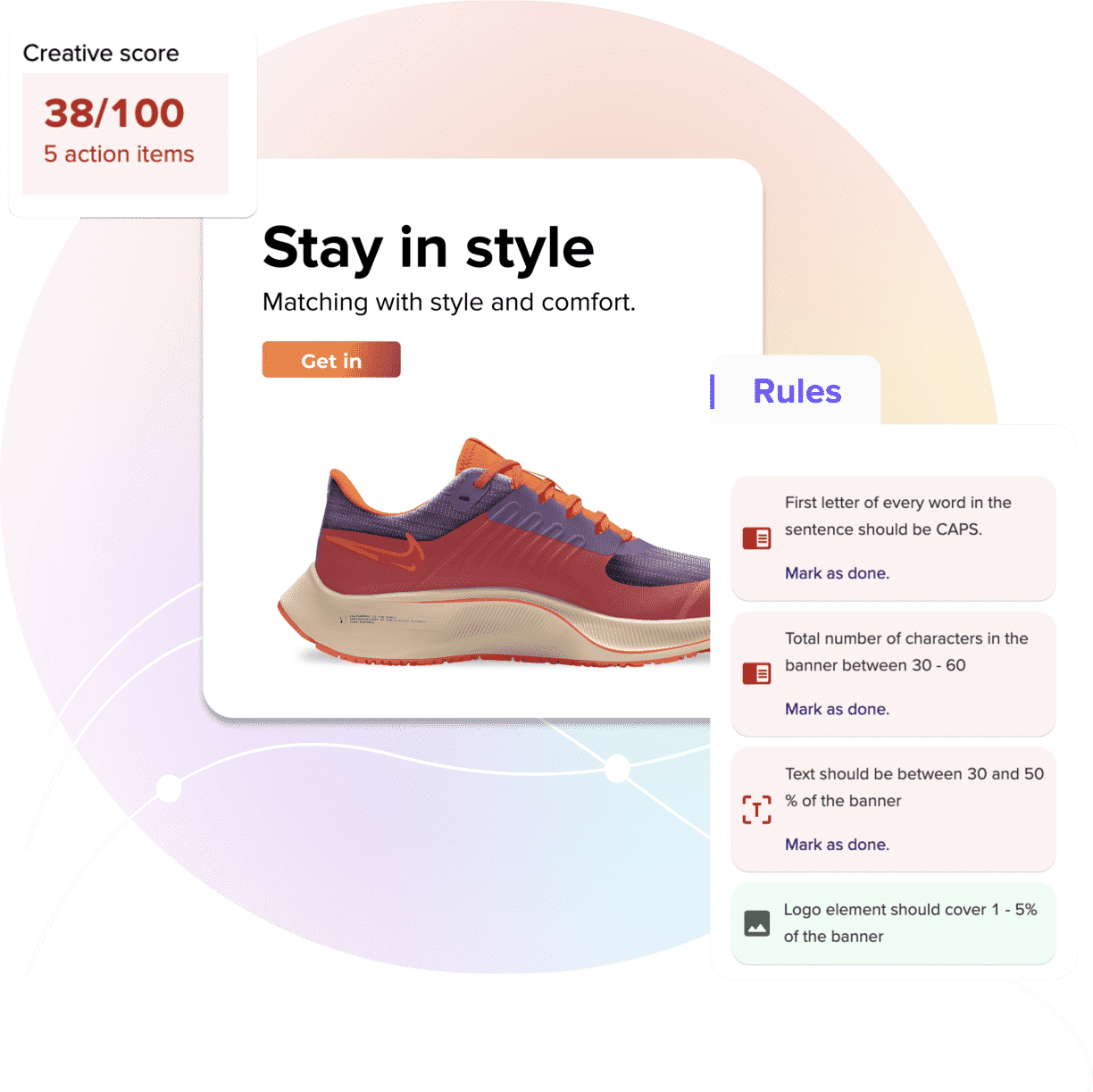
Automating brand governance saves time on three fronts. One, auto-styling with presets, brings the advantage of speed.

Two, review time decreases drastically if all brand guidelines are being followed. Three, you go live with campaigns faster, empowering teams to focus on actual creative marketing.
“Half the money I spend on advertising is wasted; the trouble is I don’t know which half.”
Whether John Wanamaker, a retailer, and marketing pioneer, said those words is debated. What isn’t is the unaccountable cost of advertising. For a long time, there was no bankable approach to quantifying the impact of ads.
Today, creative intelligence has become a scientific process. With reporting and analytics, marketers know exactly the return on their investment. Moreover, they can utilize action-packed insights on each ad’s performance to reduce costs further.
Teams can evaluate stats like views, CTRs, impressions, and demographics of past campaigns for better outcomes in future creative marketing. Better yet, with consolidated reporting, they don’t have to switch platforms to get a complete picture of campaign analytics. Instead, data from every channel the campaign has run on is available in one place.
Similarly, they can quickly experiment with many variations to determine which ad element or creative marketing ideas contributed to the success:
Creative intelligence allows teams to make data-backed decisions and change their creative marketing process accordingly. And in the long run, it saves valuable dollars while enhancing revenue.
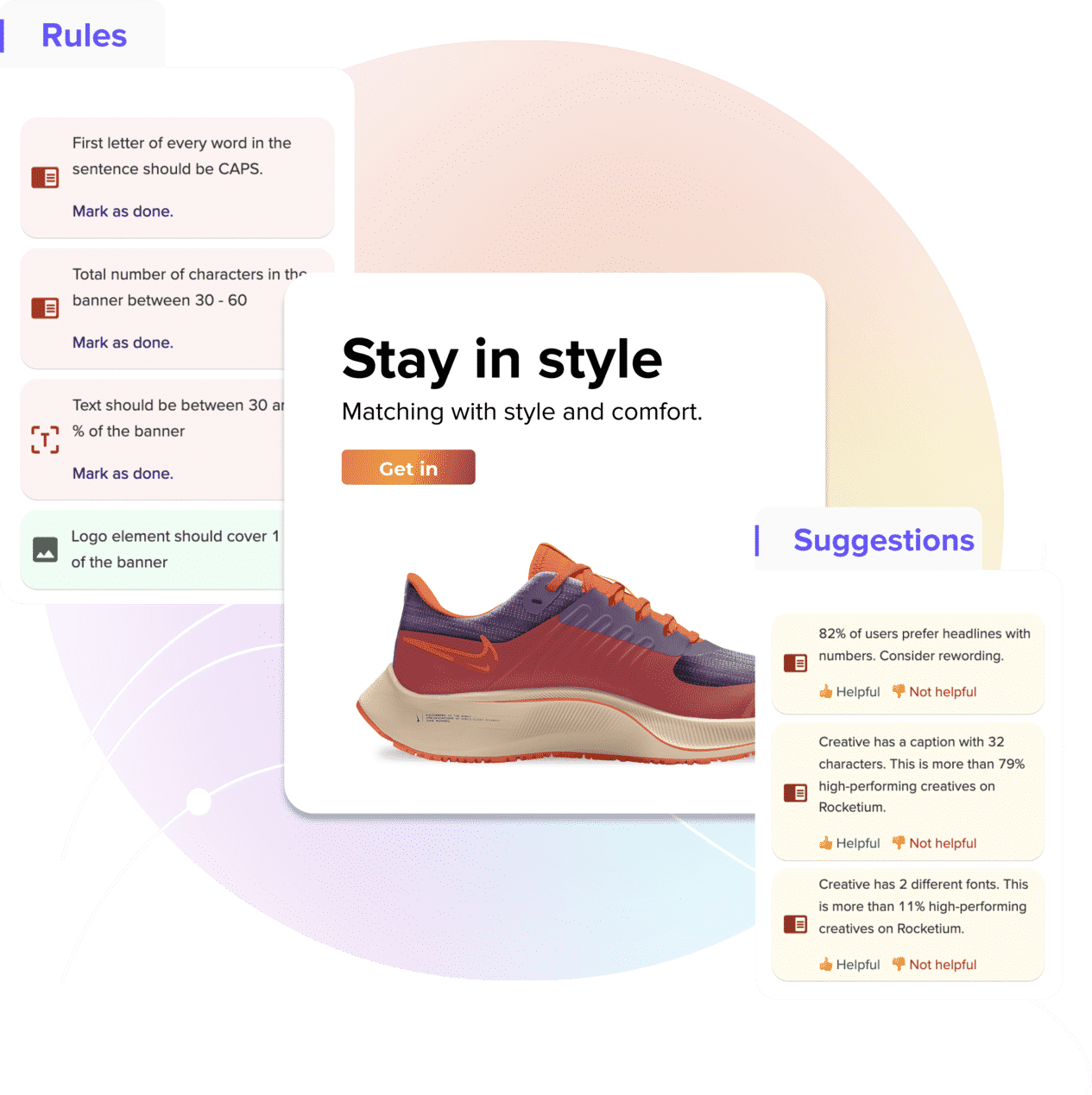
Most marketing teams work reactively instead of proactively because there’s barely any time or mental space left for strategy after the entire ad creation process is done. Automating ad publishing and managing streamlines this.
For instance, teams can set conditions to pause ads that underperform automatically.
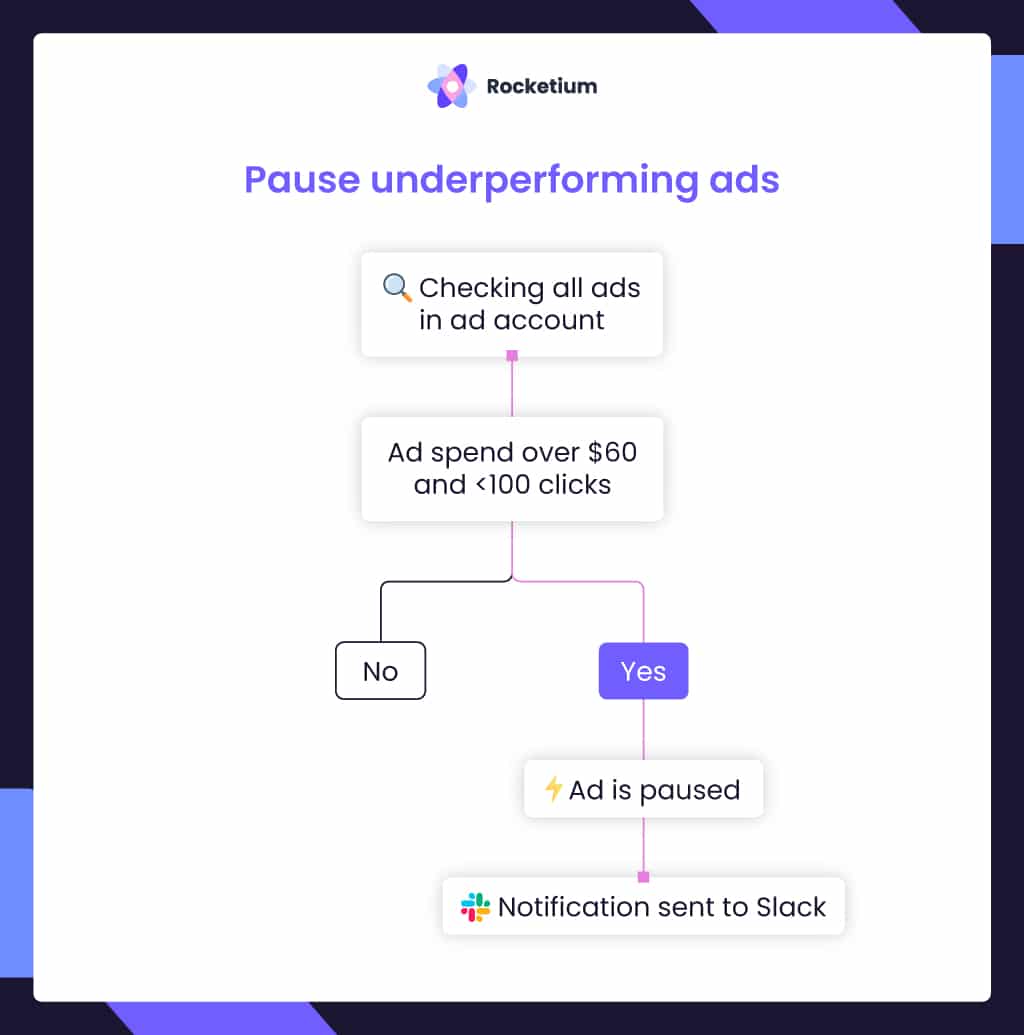
Another example is using conditions like impressions and ROAS to test if the ad is a winner or not. If not, they can publish another in its place, ensuring self-regulated campaign growth.
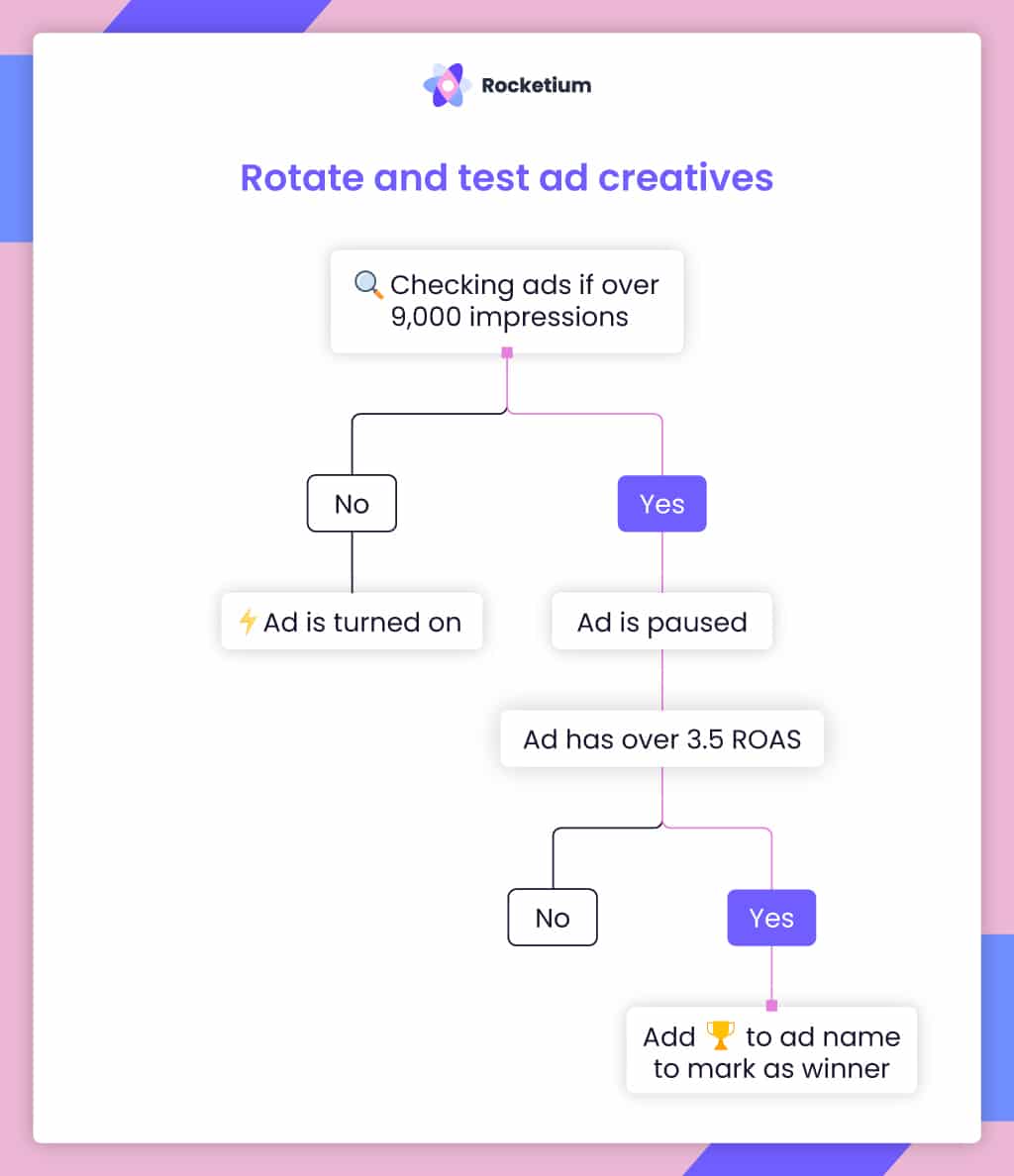
One more way automation feeds into creative marketing is by scaling the best-performing campaigns. For example, a team can set custom timeframes and then compare the metrics of different ads to find the one with winning performance. Then the budget for those ad sets can be increased to gain more results.
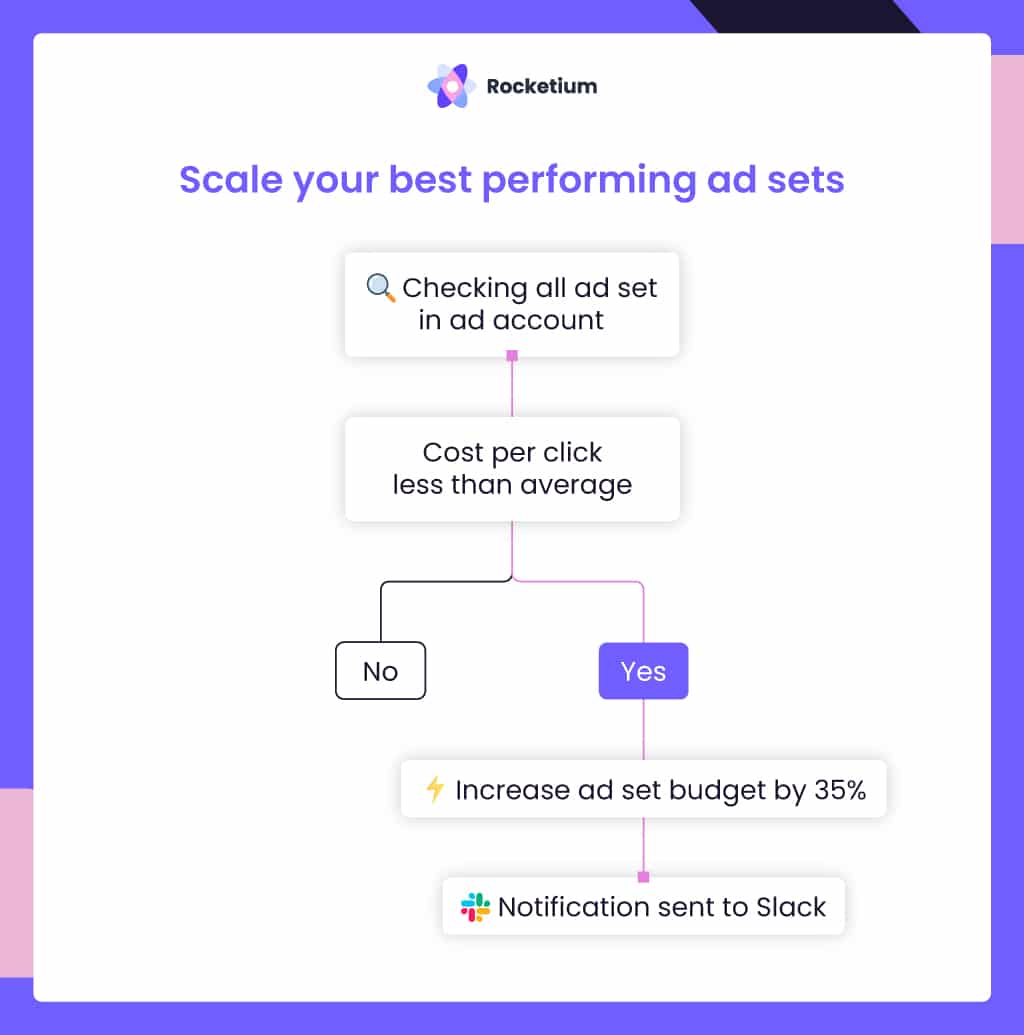
The biggest challenge for any team is alignment. It is even more so for marketing and design teams because each person’s functions oscillate widely. Then there are the platforms and tools each uses to get their jobs done.
Add in the tight turnaround times, and ensuring the whole team is on the same page becomes difficult. And that’s true even when you find the right people for the right role.
That’s where creative collaboration through automation comes in.
Ad creation becomes smoother and more efficient when collaboration between marketers and designers is streamlined. For instance, reviews happen in real-time with the concerned teammate tagged right on the creative.
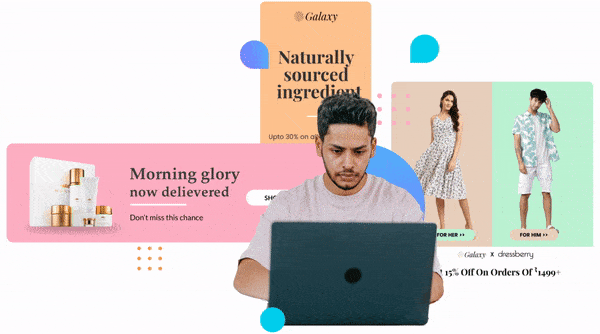
For approval or feedback from multiple reviewers, the team can share view-only links to creatives. More importantly, it eradicates the need for chaotic email threads with finalized versions stored directly in a central location.
Automation ensures that systems (such as centralized workflows) guarantee that every team member is aligned and productive.
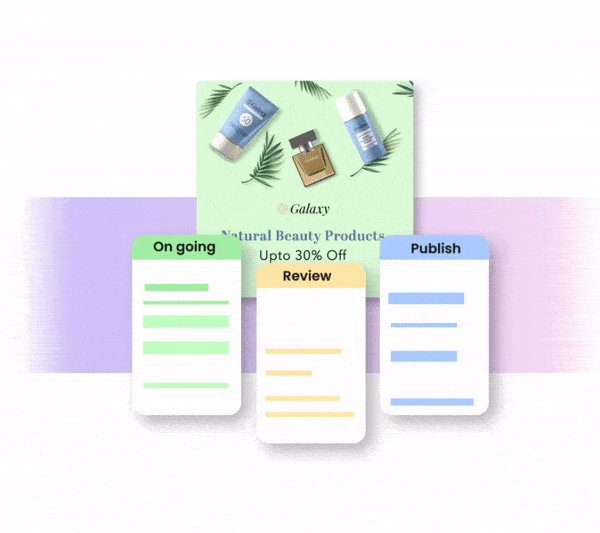
With people being aware of who has to do what, by when, and using a single platform for creation and communication, it standardizes workflow. As a result, there are fewer errors, higher speeds, and, in the end, more time and a healthier work environment.
And that leads to more meaningful discussions, brainstorming sessions, and the exchange of ideas that deliver true creative marketing.
The competition for attention and engagement is revving up. A brand can only stand out through creative marketing because while ads may remain king, creativity will always be King Kong. It is the vessel that delivers value to the target audience and results for the brand.
Yet, marketers struggle and barely tread the water of creating ads within deadlines and budgets. Creative automation allows scaling production and leaves teams to care for originality and quality.
Rocketium was born out of the need to help marketers and designers regain control over their time and efforts. Packed with features that empower teams to build high-frequency digital campaigns at scale, it:
Loved by some of the leading global brands like Meesho, OkCredit, Swiggy, and Urban Company to engage their users and drive growth, Rocketium is designed to integrate with a wide range of platforms seamlessly.